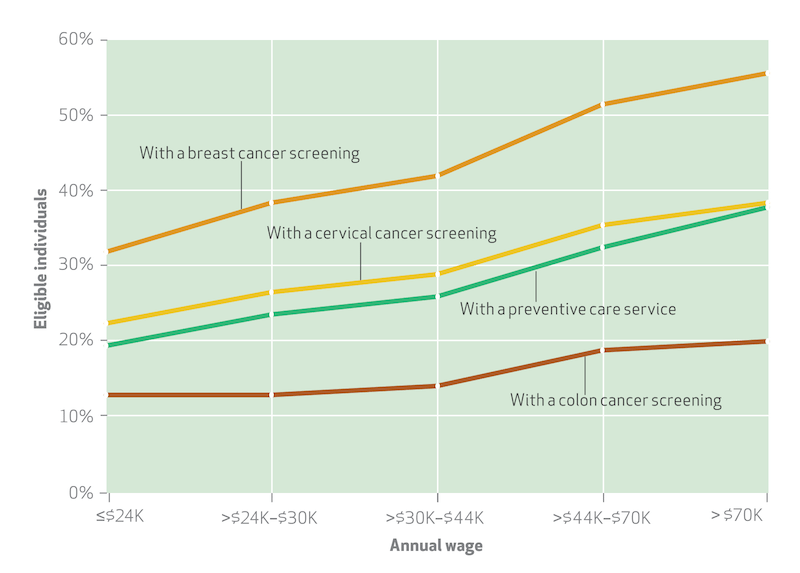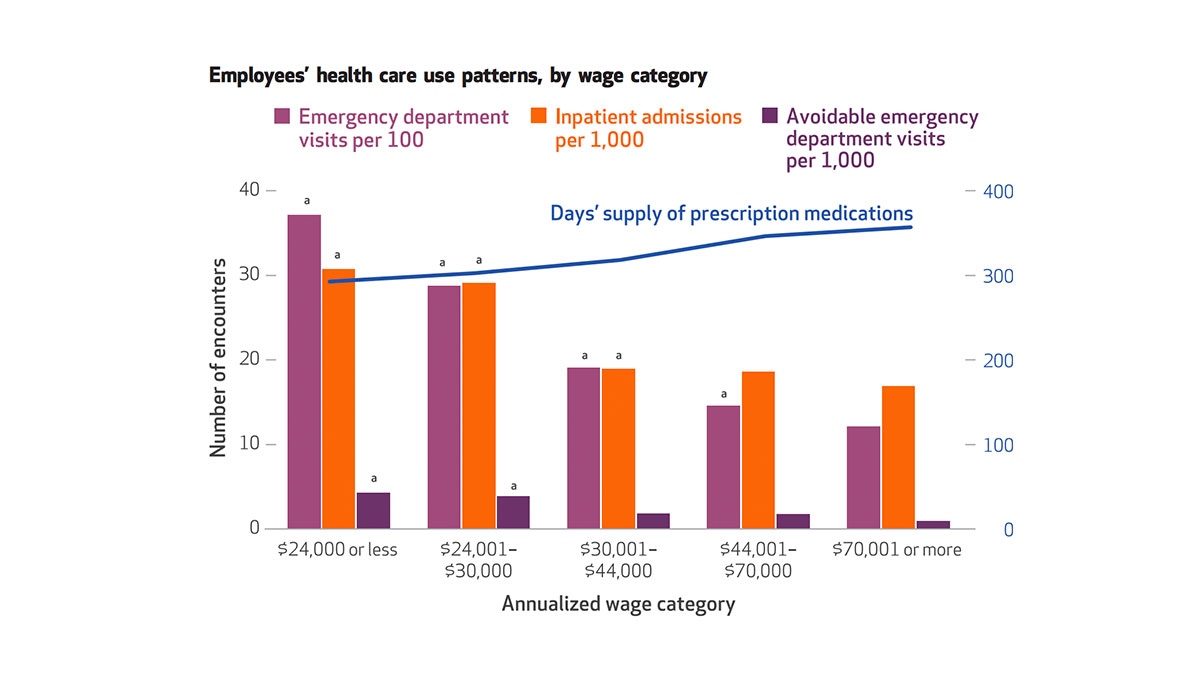It is no secret to the lower-middle class that health care costs are rising while wages lag behind. When the ACA mandated that certain employers provide insurance to their employees, they responded with widespread cost-saving efforts which placed a heavier burden on employees’ paychecks. The percent of employee wages spent on deductibles has risen by 67% since 2010, which is “six times more than the rise in workers’ wages (10 percent) and general inflation (9 percent).” Up to 21% of income for the lowest-wage workers may be spent on premiums and deductibles.
Bruce W. Sherman, assistant clinical professor of medicine at Case Western Reserve University, and a team of colleagues wanted to know whether or not these mandated insurance benefits are actually effective in improving employee health. They found that employees receiving a lower wage were less likely to seek out preventative care despite having the insurance to cover it.
The researchers studied more than 40,000 employees with private health insurance from self-insured employers and categorized them into 5 ranked wage earning groups. Only 19% in the lowest wage category used preventative care compared with the highest wage group, who were still in the minority at 38%. Those making the least had lower screening rates for breast cancer, cervical cancer, and colon cancer and were significantly more likely to be admitted to the hospital and visit the emergency room. Their rate of avoidable hospital admissions was four times that of their higher earning counterparts.

Photo via Workforce Health And Productivity. Health Affairs.
“The more reactive and seemingly inefficient health care utilization patterns among low-wage workers could be a consequence of financial limitations, other social determinants of health, cultural beliefs, habitual behaviors, health literacy, health care consumerism, inflexible work hours, lack of paid time away from work for health care, or a combination of these,” Sherman and colleagues explain.
Promising solutions include provision of worksite health clinics and education programs for patients promoting “appropriate use of services.” Some employers provide wage-based insurance benefits, but they still have to take on the cost of subsidization.
Regardless of what the government decides to do about health care and the ACA in the future, policymakers must provide incentive and support if employers are to engage in efforts to improve workforce health.
Databyte via Bruce Sherman, Teresa Gibson, Wendy Lynch, and Carol Addy, Health Care Use And Spending Patterns Vary By Wage Level In Employer-Sponsored Plans. Health Affairs.













